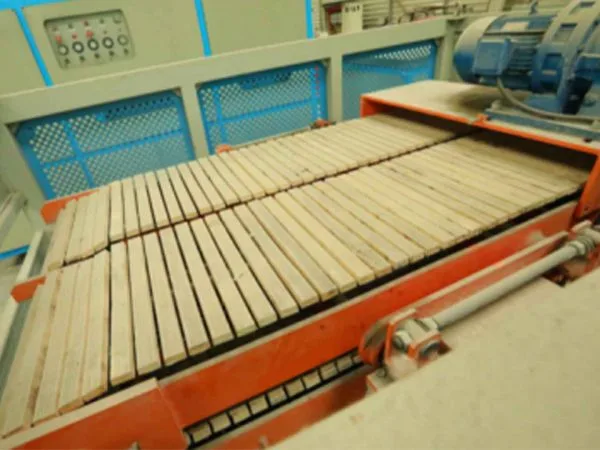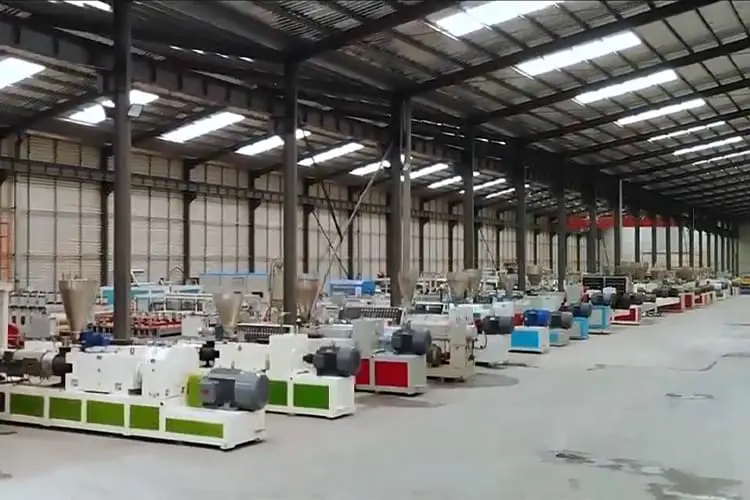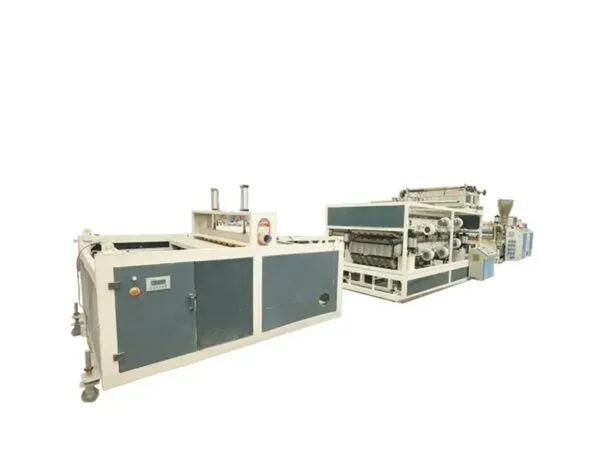Welcome to My Blog!
Before we dive into the content, I’d love for you to join me on my social media platforms where I share more insights, engage with the community, and post updates. Here’s how you can connect with me:
Facebook:https://www.facebook.com/profile.php?id=61567891941530
Now, let’s get started on our journey together. I hope you find the content here insightful, engaging, and valuable.
Caisu Machinery sells a variety of used plastic pipe production equipment. The products are of high quality and low price. Welcome to contact us for consultation and purchase. We will be happy to serve you.
Table of Contents
Introduction

In the evolving landscape of construction materials, wood plastic formwork has emerged as a sustainable and efficient alternative to traditional formwork systems. Combining the strength of wood fibers with the durability of plastic polymers, this composite material offers numerous advantages in terms of longevity, recyclability, and performance.
The wood plastic formwork production line is a sophisticated assembly of machinery and processes designed to manufacture these composite panels. Understanding the intricacies of this production line is crucial for manufacturers aiming to produce high-quality formwork that meets industry standards.
In this comprehensive guide, we will delve into the components, processes, and considerations involved in setting up and operating a wood plastic formwork production line.
Components of a Wood Plastic Formwork Production Line
A typical wood plastic formwork production line comprises several key components, each playing a vital role in the manufacturing process:
Raw Material Preparation System
This system is responsible for preparing the wood fibers and plastic polymers. The wood fibers are dried to reduce moisture content, while the plastic polymers are cleaned and shredded if recycled materials are used.
Mixing and Compounding Unit
In this stage, the prepared wood fibers and plastic polymers are mixed together, often with additives such as coupling agents, stabilizers, and colorants. The goal is to create a homogeneous composite material.
Extrusion System
The homogeneous mixture is fed into an extruder, where it is heated and forced through a die to form panels of specific dimensions. The extrusion process determines the final shape and surface finish of the formwork panels.
Cooling and Calibration Unit
After extrusion, the panels pass through a cooling system to solidify and stabilize their shape. Calibration ensures that the panels meet the required thickness and width specifications.
Cutting and Stacking Section
The cooled panels are cut to the desired lengths and stacked for packaging or further processing.
Production Process of Wood Plastic Formwork

The production of wood plastic formwork involves several sequential steps:
- Raw Material Selection: Choose appropriate wood fibers and plastic polymers, considering factors like strength, durability, and compatibility.
- Material Preparation: Dry the wood fibers to the required moisture content and clean the plastic polymers.
- Mixing and Compounding: Combine the materials with additives in a high-speed mixer to create a uniform composite.
- Extrusion: Feed the composite into an extruder, where it is melted and shaped into panels through a die.
- Cooling and Calibration: Cool the extruded panels and calibrate them to ensure consistent dimensions.
- Cutting and Stacking: Cut the panels to the required lengths and stack them for storage or shipment.
Advantages of Wood Plastic Formwork
Wood plastic formwork offers several benefits over traditional formwork materials:
- Durability: Resistant to moisture, insects, and decay, leading to a longer lifespan.
- Reusability: Can be reused multiple times without significant degradation.
- Eco-Friendly: Utilizes recycled materials and reduces deforestation.
- Cost-Effective: Lower maintenance and replacement costs over time.
- Lightweight: Easier to handle and install, reducing labor costs.
Comparative Overview of Formwork Materials
| Material | Durability | Reusability | Environmental Impact | Cost-Effectiveness | Weight |
|---|---|---|---|---|---|
| Wood Plastic Composite | High | High | Low | High | Lightweight |
| Traditional Wood | Medium | Low | High | Medium | Lightweight |
| Steel | Very High | Very High | Medium | Low | Heavy |
| Aluminum | High | High | Medium | Medium | Medium |
| Plastic | Medium | Medium | Low | High | Lightweight |
Maintenance and Quality Control in Production

Ensuring the quality of wood plastic formwork is essential for performance and safety:
- Regular Equipment Checks: Maintain machinery to prevent defects in the panels.
- Material Testing: Conduct tests on raw materials to ensure consistency and quality.
- Process Monitoring: Monitor temperature, pressure, and mixing ratios during production.
- Final Product Inspection: Inspect panels for uniformity, strength, and surface finish.
Conclusion
The wood plastic formwork production line represents a significant advancement in construction material manufacturing. By combining sustainability with performance, it addresses the industry’s need for durable, eco-friendly, and cost-effective formwork solutions.
For manufacturers, investing in a wood plastic formwork production line offers an opportunity to meet the growing demand for sustainable construction materials. By understanding the components, processes, and quality control measures involved, producers can ensure the delivery of high-quality formwork panels that meet industry standards and client expectations.
FAQ
What are the primary materials used in wood plastic formwork?
The main materials are wood fibers and plastic polymers, often combined with additives to enhance performance.
How does wood plastic formwork compare to traditional wood formwork?
Wood plastic formwork offers greater durability, reusability, and resistance to environmental factors compared to traditional wood formwork.
Is the production process environmentally friendly?
Yes, it utilizes recycled materials and produces less waste, contributing to sustainable construction practices.
What is the typical lifespan of wood plastic formwork?
With proper maintenance, wood plastic formwork can be reused multiple times, often exceeding the lifespan of traditional wood formwork.
Can the production line be customized for different panel sizes?
Yes, the extrusion dies and calibration units can be adjusted to produce panels of various dimensions to meet specific project requirements.





